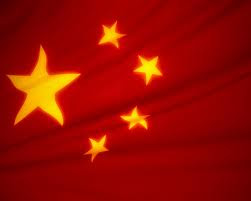BEIJING: The apparel sector is set to boom in China in the next five years, but many brands and retailers may also have to "rethink their strategies", the Boston Consulting Group has argued.
The firm estimated annual per capita category spending among 14-45 year olds stands at 1,150 yuan ($177; £110: €126) in China, compared with 5,020 yuan for the UK, and 5,770 yuan regarding the US.
Sales in the world's most populous nation reached 398bn yuan in 2010, and are forecast to hit 800bn yuan in 2015 and 1,348 yuan in 2020, generating 30% of global growth in the process.
To date, however, many international brands only possess a "small footprint", with Zara running 70 branches, Benetton boasting just 25 and Gap operating five, measured against over 1,000 apiece in their home markets.
By contrast, indigenous sports specialists Li Ning and Anta have around 7,000 outlets, while Nike and Adidas are present in 6,000, Bestseller has approximately 4,000, and Metersbinwe has 3,000.
"The next ten years will be a definitive time for China's fashion market; now is the time for established and aspiring players to rethink their strategies," BCG said.
One driver supporting this shift will be the growth in middle class from 50m in 2010 to 140m in 2020. These are households earning at least 74,000 yuan per year.
A survey of 5,000 respondents revealed 31-35 year olds spend the greatest amounts on fashion, at 4,173 yuan a year, followed by 26-30 year olds on 3,841 yuan, and 21-25 year olds on 3,330 yuan.
Exactly 50% of BCG's panel also hope to trade up in the apparel sector this year, a total five percentage points higher than in 2010, and 14% more than in 2009.
The main emotional triggers for shoppers are demonstrating success and status, alongside creating a clear role for themselves, two qualities given greater weight than being "comfortable" or "avoiding mistakes".
Diesel and Club Monaco were among the retail chains seen as the most "trendy", with Polo and Prada performing well in terms of showing "success", as did Uniqlo when it comes to achieving a "balanced lifestyle".
Womenswear delivers 54% of all revenues, with men's clothing on 46%, but in smaller cities from tiers four to seven, male customers make 54% of purchases, compared with 43% in tier one cities like Shanghai.
Lower tier cities held a 50% share of China's fashion market in 2010, and by 2020 two-thirds of the country's middle class and affluent population will live in these areas.
As such, companies wanting to reach 80% of this demographic need a presence in 462 cities, this will climb to 568 cities by 2020.
Moreover, 50% of this group will live within a 50km radius of a first, second or third tier city, leading to what BCG described as "city clusters", as these urban centres increasingly merge into each other.
Elsewhere, the consultancy reported apparel is already the most popular online retail category in China, and predicted the number of internet shoppers in China will rise from 145m in 2010 to 329m in 2015.
Specialist online operator Vancl has enjoyed significant growth thanks to its value pricing and wide selection, but bricks and mortar chains lag considerably behind.
Fast fashion expert Uniqlo has also used digital marketing extensively, building a dedicated store on ecommerce platform Taobao Mall, and partnering with social network RenRen, running competitions and similar schemes.
Data sourced from Boston Consulting Group; additional content by Warc staff, 18 July 2011

